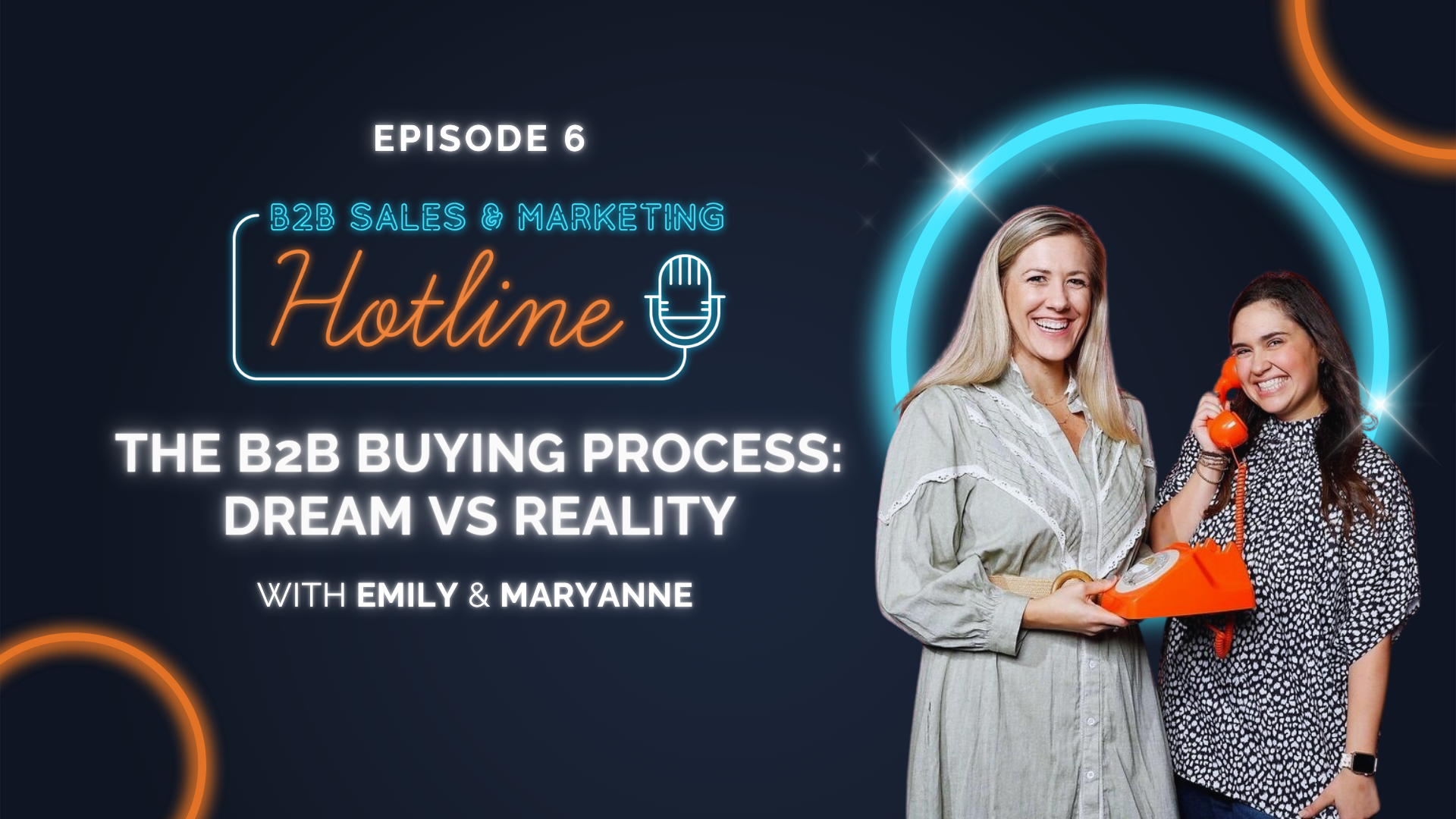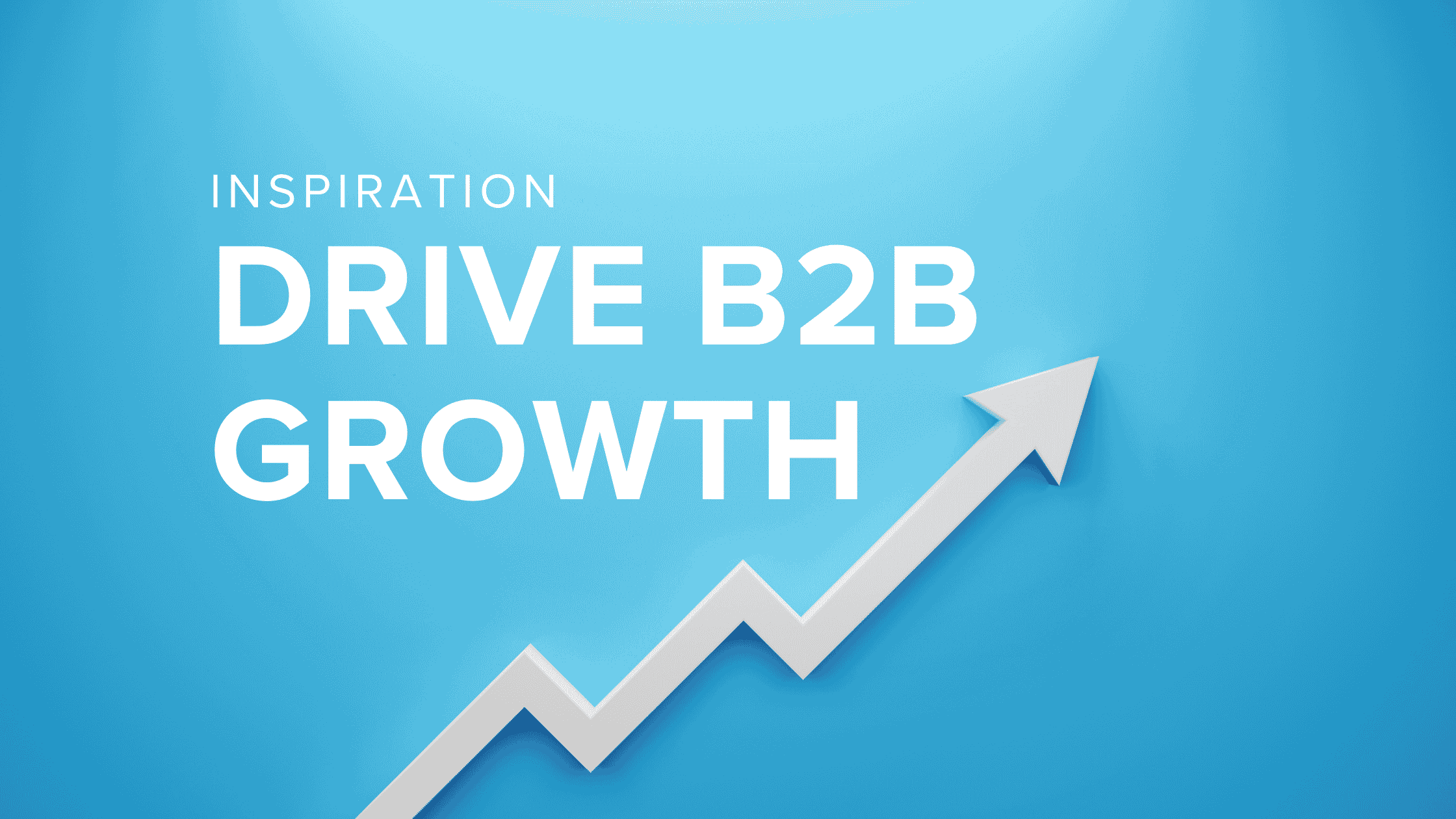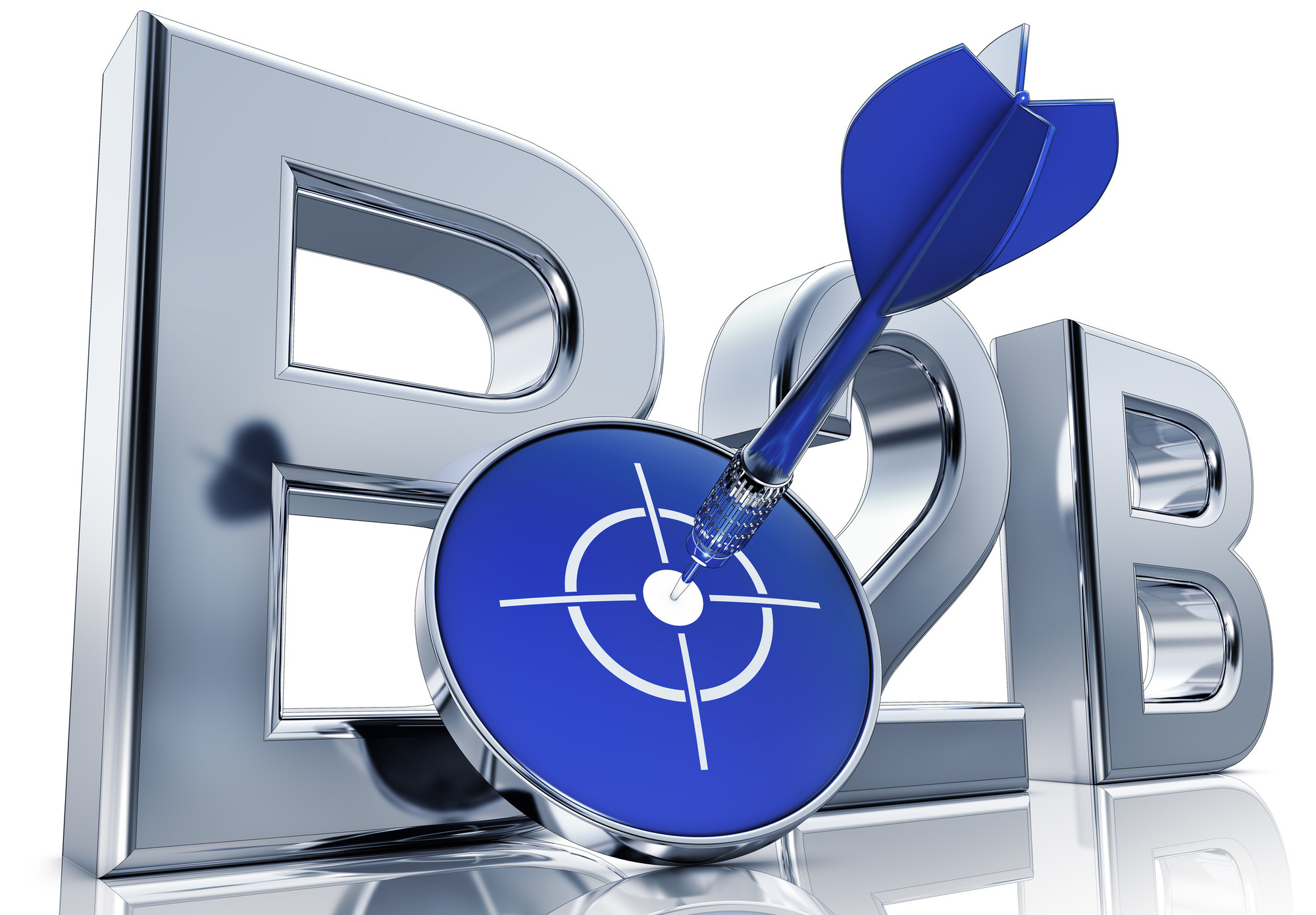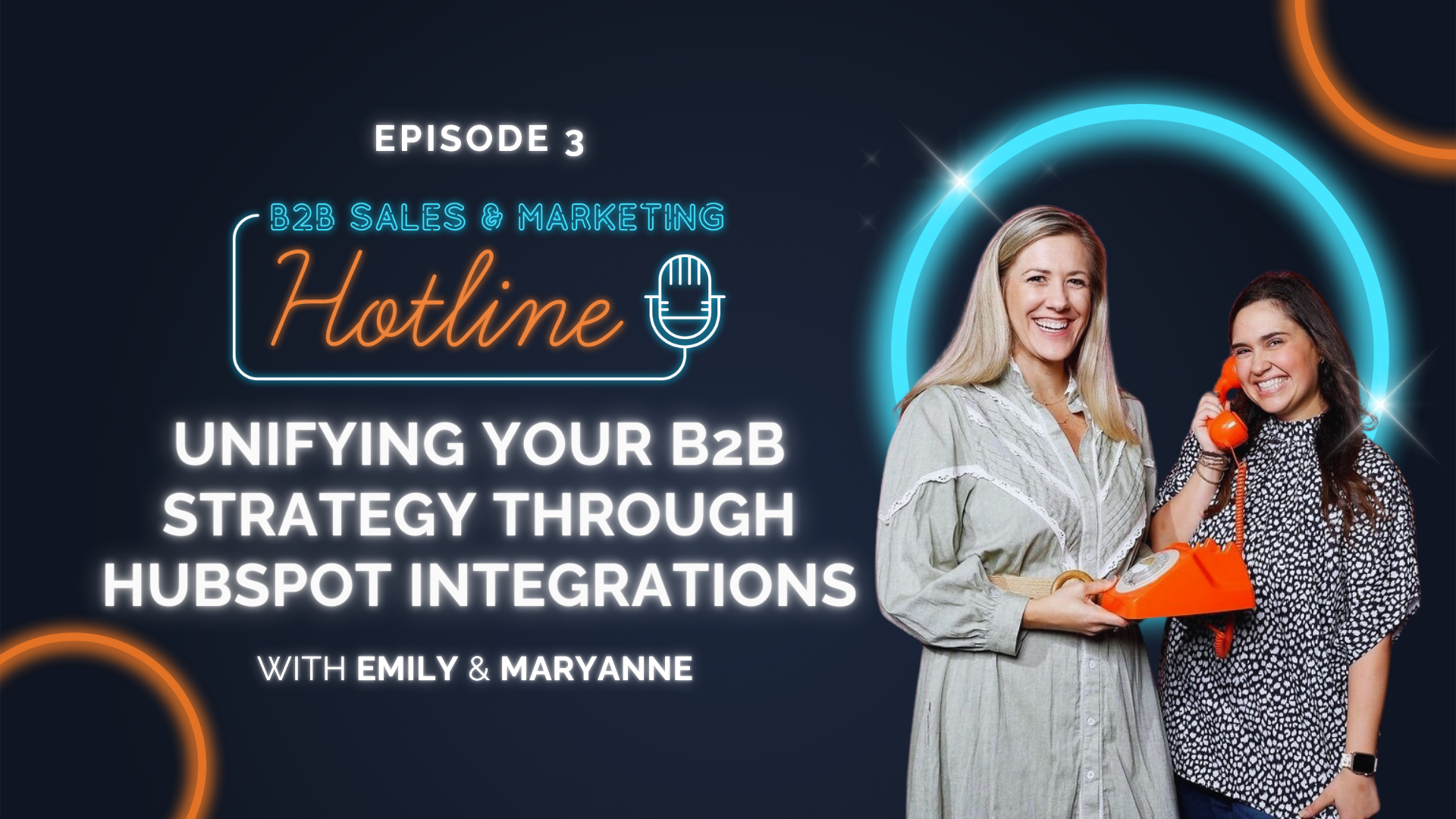2025 Inspiration: 8 Tactics Driving B2B Growth
Every year, B2B organizations hit the ground running with the strategies and tactics they think will elicit the best response from their target...

In this episode of The B2B Sales & Marketing Hotline, Maryanne and Emily dive into the complexities of the B2B buying process, exploring the gap between the ideal scenario and the reality. While many envision a seamless journey from lead generation to closing a sale, the truth involves multiple touchpoints and extended timelines.
Together, they break down:
Tune in to learn how to navigate the intricate B2B buying landscape and set realistic expectations for success.
.png)
In the dream world of B2B sales, many envision a straightforward buying process:
a prospect attends a webinar, fills out a form, and swiftly transitions to a sales conversation, culminating in a quick purchase.
However, this dream scenario rarely aligns with reality.
The B2B buying process is far more intricate, involving multiple touchpoints and decision-makers. Recognizing this complexity is crucial for businesses striving to enhance their sales strategies. As B2B transactions often involve higher stakes and longer commitments, understanding the nuanced journey of each buyer is essential.
The actual B2B buying process is multifaceted, extending beyond simple interactions. It involves engaging with potential clients through various channels and providing value at every stage of their journey.
Buyers today are more informed, accessing a plethora of resources before coming close to making a purchasing decision. This means businesses must adapt by offering tailored content that addresses different stages of the buyer's journey, from awareness to decision-making.
Acknowledging that not all prospects are ready to buy immediately allows companies to build meaningful connections and foster trust over time.
Companies must evolve their strategies to remain competitive. This involves moving away from the one-size-fits-all approach and embracing a more personalized engagement model.
Utilizing technology and analytics, businesses can identify effective touchpoints and optimize their sales processes. By analyzing past successful deals, organizations can develop a repeatable strategy that aligns with their unique market dynamics.
This strategic approach not only enhances efficiency but also increases the likelihood of converting leads into loyal customers.
A strong synergy between sales and marketing teams is vital for navigating the complexities of the B2B buying process.
While marketing lays the groundwork by generating leads and nurturing prospects, the sales team must build on this foundation with targeted outreach. By collaborating closely, these departments can craft complementary strategies that guide prospects through the sales funnel.
A well-documented playbook, featuring specific touchpoints and engagement tactics, ensures consistency and effectiveness. This alignment fosters a seamless transition from marketing to sales, ultimately enhancing the buyer's experience and driving business success.
In conclusion, understanding the reality of the B2B buying process equips businesses to adapt and thrive in a competitive market. By acknowledging the intricacies involved and fostering collaboration between sales and marketing, companies can build trust, drive engagement, and ultimately achieve their sales goals.

Every year, B2B organizations hit the ground running with the strategies and tactics they think will elicit the best response from their target...

From independent entrepreneurs to sales managers, your B2B consumers see an average of over 5000 ads a day. Typical marketing channels can often...

In this episode of The B2B Sales & Marketing Hotline, we're exploring the world of HubSpot integrations to help you craft a unified B2B strategy....